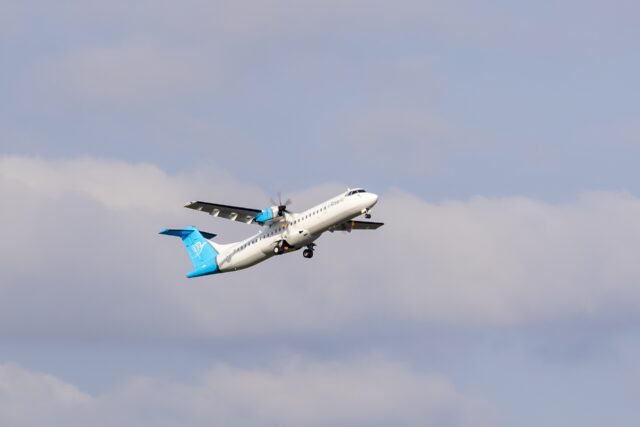Reports: India’s 1st Dassault Rafale shot down because IAF underestimated Pakistani missile capabilities

August 4, 2025

A miscalculation of the range of a missile led to the Indian Air Force’s first-ever loss of a Dassault Rafale fighter jet in combat.
In the early hours of 7 May, India’s Rafale fighter was shot down during a massive aerial engagement with Pakistan, known as Operation Sindoor. This was the largest such dogfight in decades. According to reporting in Reuters, the loss of the Rafale was due to a critical intelligence failure.
“We ambushed them,” a senior Pakistani Air Force (PAF) official told Reuters, adding that Islamabad conducted an electronic warfare assault on Delhi’s systems in an attempt to confuse Indian pilots.
Detailed interviews by the news agency with Indian and Pakistani officials reveal that the Rafale’s loss was not due to aircraft failure or pilot error, but a flawed Indian assessment of the PL-15 air-to-air missile.
This long-range weapon is fitted to Pakistan’s Chinese-made J-10C Vigorous Dragon jets.
The Indian Air Force misjudged Pakistan’s missile range
Indian intelligence had assumed the missile’s effective range was around 150 kilometres, based on its export variant. But in reality, the missile struck the Rafale from 200 km or more, a distance never before recorded in an actual air-to-air engagement.
“The Indians were not expecting to be shot at,” said Justin Bronk, air warfare specialist at the Royal United Services Institute (RUSI). “The PL-15 is clearly very capable at long range.”

Zhang Xuefeng, a Chinese military affairs expert, told China’s official Global Times that one of the biggest characteristics of the PL-15E is its long range. Its maximum attack range could surpass previous missiles by a very large margin.
According to the Global Times, the PL-15E uses a mixed guidance mode of inertial navigation system, satellite navigation system, datalink and active radar terminal guidance. Its range was labelled 145 kilometres at Airshow China 2021 when it made its public debut.
Did India lose multiple Dassault Rafale fighter jets?
Following the conflict, Pakistan claimed to have shot down three IAF Rafale fighter jets. But Dassault, the aircraft maker, says this is not possible.
Under an agreement signed on 23rd September 2016 between the French and Indian governments, 36 Rafale fighters were delivered to the Indian Air Force (IAF).

In an interview with French magazine Challenges in June, Dassault Aviation Chairman and CEO Eric Trappier dismissed the shootdown as “factually incorrect.”
He made it clear that Dassault had received no official communication from the IAF indicating any such losses.
“We will see if there were losses or not, and if the war aims were achieved. When the truth comes out, some may have surprises,” he said.
India has also ordered 26 Rafale fighters for its Navy.
Is India’s Rafale loss a red flag for Western technology?
The Rafale is a cornerstone of India’s air superiority ambitions, and until recently, had remained unscathed in combat zones.
Its destruction has not only marked the first confirmed loss of the aircraft in battle but has also challenged perceptions about Western technological supremacy, particularly in air warfare.
Officials familiar with the event confirmed that Rafale pilots had operated under the belief they were beyond threat, unaware that Pakistan’s J-10Cs, operating in near-total radio silence, were receiving real-time targeting data via an integrated command-and-control network, referred to as a “kill chain”.

Retired UK Air Marshal Greg Bagwell, now a fellow at RUSI, said the episode didn’t conclusively prove the superiority of either Chinese or Western air assets, but it showed the importance of having the right information and using it.
“The winner in this was the side that had the best situational awareness,” Bagwell told Reuters.
This system, built around Pakistan’s homegrown Data Link 17, connected J-10 fighters with land-based radar, satellite imagery, and a Swedish-made airborne surveillance aircraft.
This allowed Pakistani jets to keep their radars off while still tracking Indian fighters, significantly reducing the chances of early detection.
New Delhi’s intelligence failure and political constraints
India hasn’t officially acknowledged a Rafale being shot down during Operation Sindoor, which was launched to eliminate the terror camps in Pakistan.
But the Reuters report quoted two Indian officials conceding that the loss stemmed from faulty intelligence on the PL-15’s capabilities, which provided Rafale crews with a false sense of safety.

Compounding the issue was an apparent directive from India’s political leadership not to target Pakistani military assets or air defences, limiting the IAF’s engagement options in the opening stages of the conflict.
Some Indian security officials have since suggested that the air force was not given the full freedom to respond decisively on the first night of action.
India’s Chief of Defence Staff, General Anil Chauhan, stated in an earlier interview that certain “tactical mistakes” made during the “initial stages” were “remedied, rectified later,” and that Indian jets had been able to “hit deep inside Pakistan.”
















